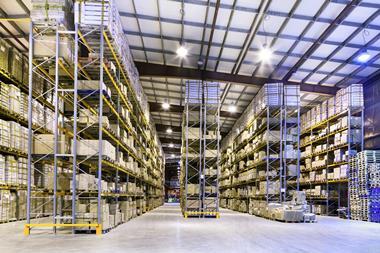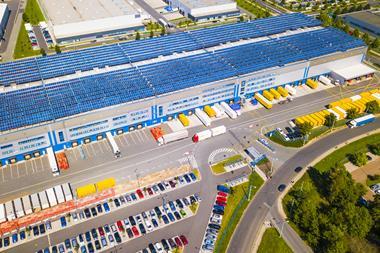The industrial sector has transformed itself over the past five years, and the most important driver is the change in consumer behaviour and consequent growth in online commerce. The old model of delivering goods is simply not fit for purpose anymore – and 10 years from now, the new model will have undergone further transformation.

In 2019, online sales accounted for just over 19% of total retail sales, the largest annual percentage to date. To meet this online demand, we have witnessed a consistent take-up in the design and build market (accounting for circa 50% of the market over the past four years) among retailers and 3PL providers looking to secure bespoke larger warehouses. In 10 years’ time, we could see this share increase as occupier requirements change and adapt and as AI and automation proliferate.
Online customers have become accustomed to fast shipping, and more sophisticated parcel courier services offering last-mile, same-day and next-day delivery are forcing retailers and delivery companies to invest significantly in future-proofing their supply chain operations. To meet this online demand and prepare for the rush in peak periods, retail occupiers are now willing to pay premium rents.
The success of a retailer’s online strategy is closely linked to the distribution sector and supply chain functions. We’ve therefore witnessed strong demand for smaller urban and logistics units to serve the last mile, and this will evolve throughout the next decade.

Over the next five to 10 years, we will increasingly see courier firms use unusual space in city centre locations to help reduce pollution levels while also cutting delivery times. We expect the use of electric and smaller vehicles to increase. In 2018, DPD took 5,000 sq ft of space from the former Scotland Yard garage in Westminster with a view to using EVs to carry out last-mile deliveries.
Looking more generally at the market, over the past three years, we’ve seen the return of the ‘mega box’, as active retailers and 3PLs seek to capitalise on the growth of ecommerce while reaching greater economies of scale. There have been eight large distribution warehouses in excess of 500,000 sq ft delivered or under construction, and this trend is set to continue.
Over the next 10 years, we predict that the share of total take-up from 3PLs will increase due to the growth in ecommerce-related businesses requiring faster turnaround. As a result, there will need to be more automation and taller warehouses to accommodate this demand.
Furthermore, larger manufacturers will increasingly seek to operate from fewer and larger warehouses to consolidate their operations. The vacated buildings will either be redeveloped to cater for online-related needs or refurbished to provide alternative secondary space use.
Finally, London will see the creation of hybrid spaces where retailers and last-mile logistics occupiers could operate for click & collect and same-day delivery.
Len Rosso is head of industrial and logistics at Colliers International





























No comments yet